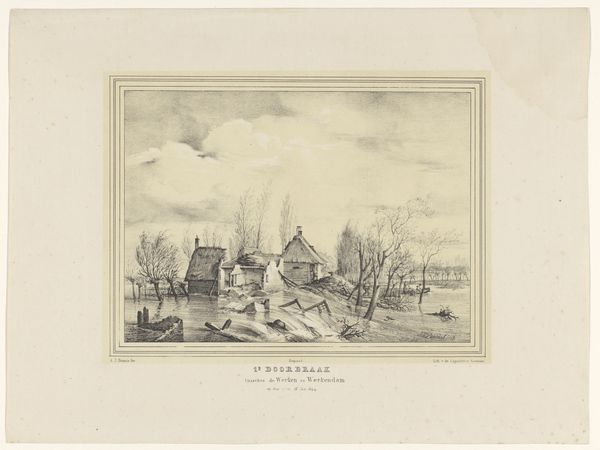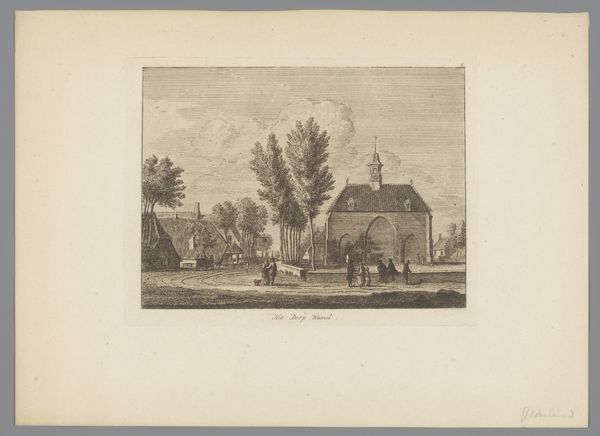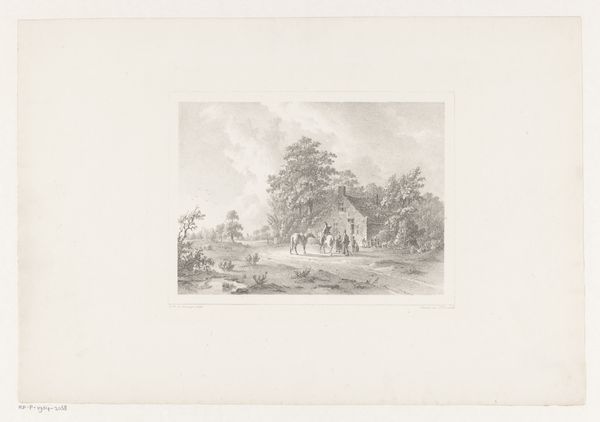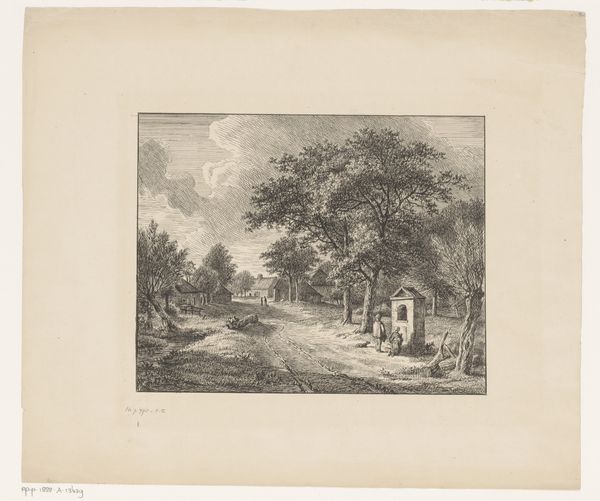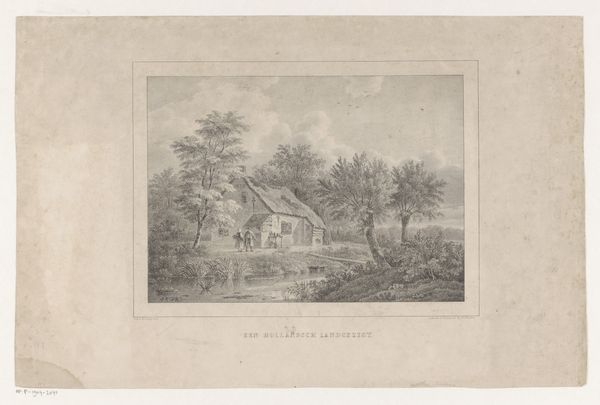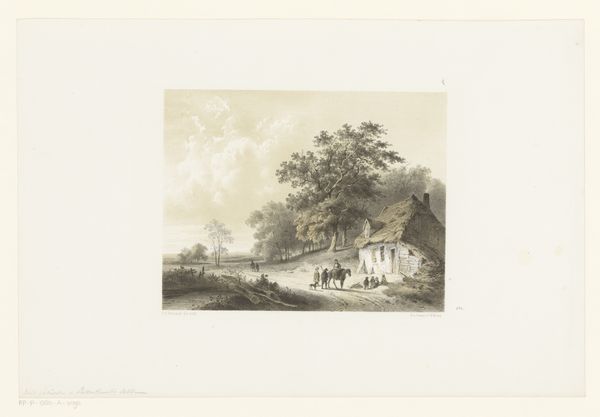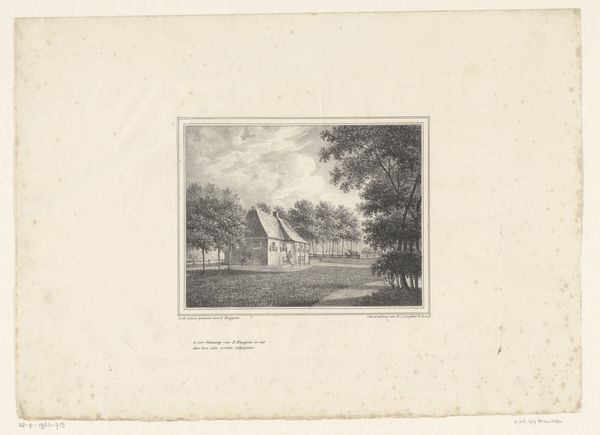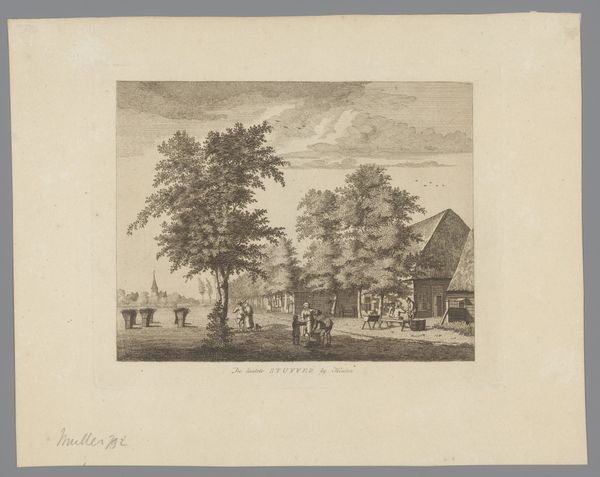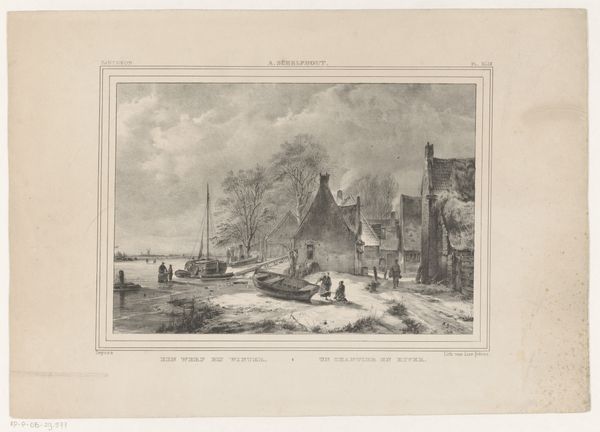
drawing, print, etching, paper, ink
#
drawing
#
16_19th-century
# print
#
etching
#
landscape
#
paper
#
ink
#
watercolor
#
realism
Dimensions: height 246 mm, width 286 mm
Copyright: Rijks Museum: Open Domain
Editor: This is "2e Doorbraak tusschen de Werken en Werkendam op den 17 en 18 Jan.ij 1849," created by Johannes Beunis in 1849, using etching, drawing, and ink on paper. The monochromatic palette gives it a somber feel. I am really struck by the landscape itself, and the disruption in the aftermath of the flood. How might we read this scene through a materialist lens? Curator: Notice the labor implied, not just in the printmaking, but also in what's depicted. Look at the remnants of fences, swept away by the flood. These represent human intervention on the land, labor invested in cultivation and demarcation. Now ravaged, they reveal a struggle against the raw power of nature. What do you make of the architecture and its relationship to this landscape? Editor: Well, the house seems almost ordinary, a simple structure. The flooding makes it appear incredibly vulnerable, as if human-made shelter is no match for nature's force. So, we're seeing labor invested in the built environment directly threatened. Curator: Precisely. Consider also the etching process. The artist’s labor, manipulating metal and acid to capture this scene of destruction, mirrors the disruption of the natural landscape. What sort of market might exist for a work like this? Editor: Presumably a market that valued realistic depictions and, maybe, historical accounts. Were people buying these prints to understand what happened, and perhaps grapple with nature's power? Curator: Perhaps it served as a somber reminder of vulnerability and the ever-present risk inherent in occupying the land. The piece transcends simple landscape art; it's a document of a specific historical event and an illustration of the struggle to manage nature for agriculture or industry. Editor: It's fascinating to think about this artwork as both a physical object made through labor and a representation of disrupted labor. I had only seen the picture initially, but understanding the historical context provides greater depth to its creation. Curator: Absolutely, focusing on materials, process, and the socio-economic backdrop allows a deeper insight than aesthetics alone can provide.
Comments
No comments
Be the first to comment and join the conversation on the ultimate creative platform.
